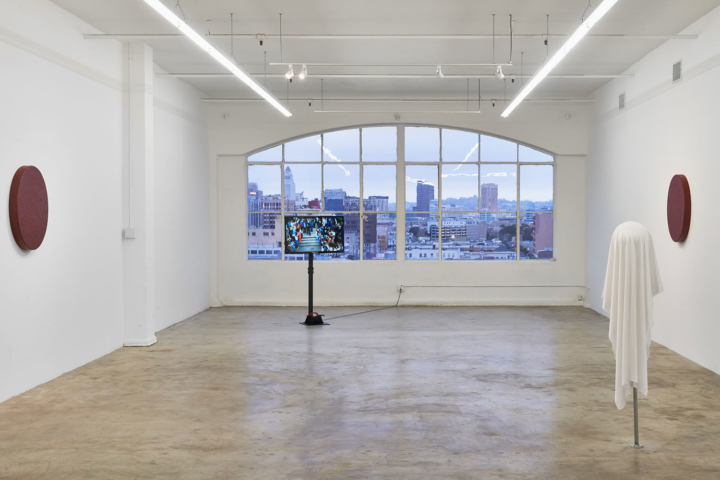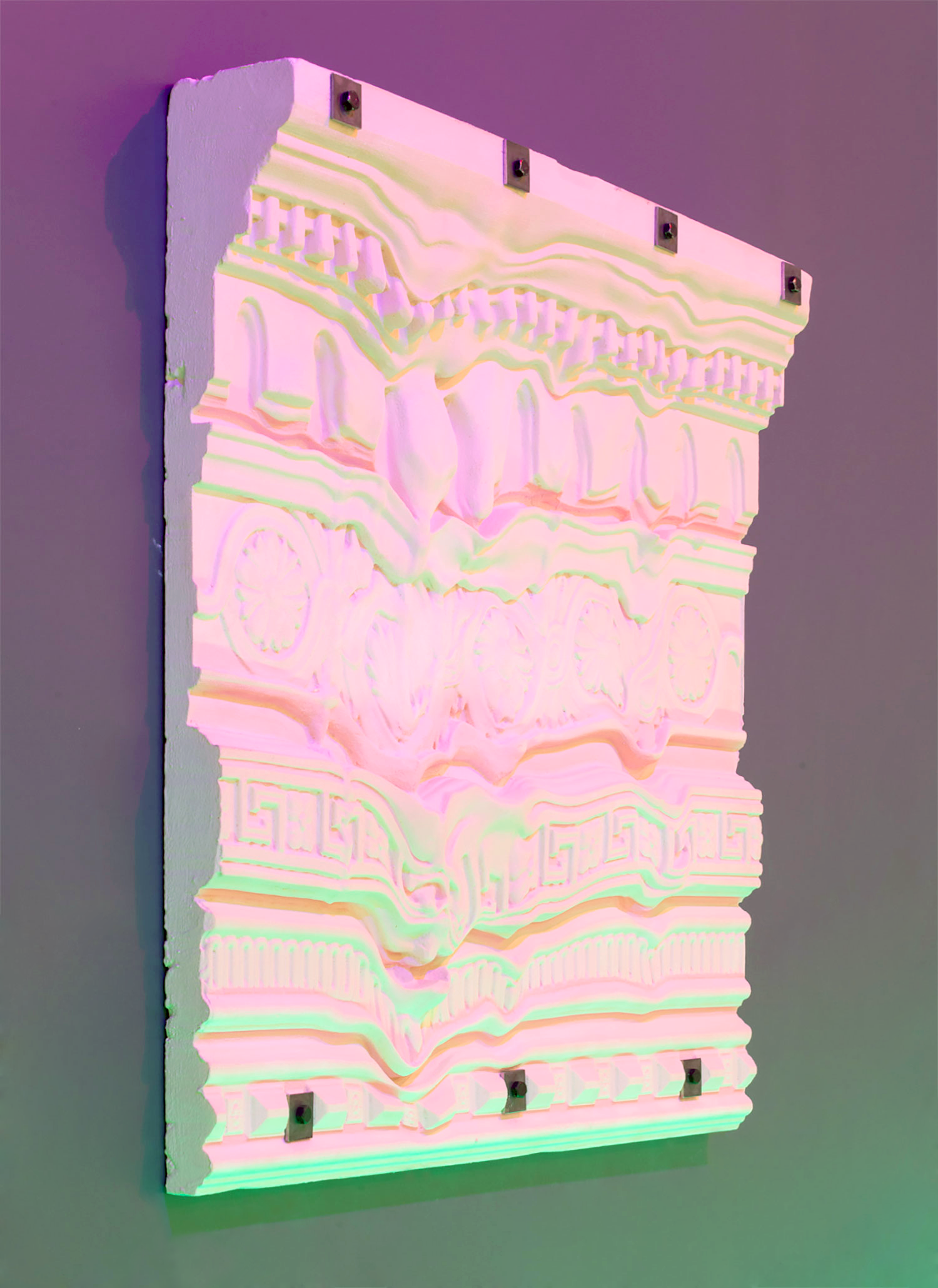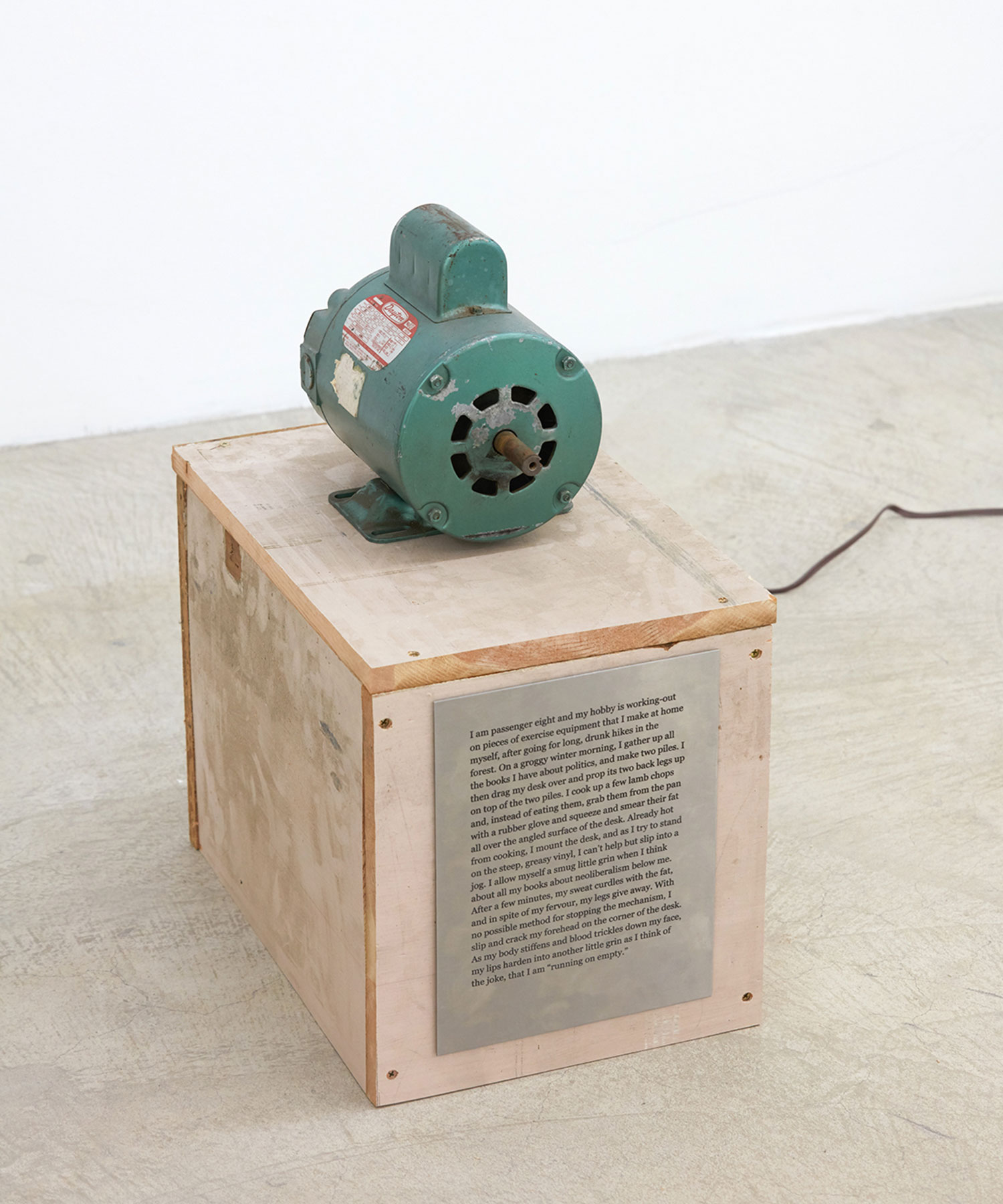Perhaps it is because you are on the tenth floor — high above the bustle, hot dog vendors, flashing toddler shoes, and spandex-clad mannequins of L.A.’s fashion district — that Aria Dean’s exhibition “lonesome crowded west” feels quietly vacant. Or perhaps it is because the space itself is filled minimally with rather minimal works: there are five identical monochrome circular wall pieces, two identical videos playing on modestly sized monitors, and one swath of white silk draped over an armature to form a cartoonish ghost shape.
The clear focal point of the scant exhibition are the videos playing at either end of the gallery, But as One Doesn’t Know Where My Centre Is, One Will with Difficulty Ascertain the Truth… Though this Task Has Made Me Ill, It Will also Make Me Healthy Again (Crowd Index) (2018). Both monitors are arranged directly in front of a large widow, framed by sweeping views of L.A.’s low-slung downtown. One-second-long soundless clips sourced from hip-hop videos (circa NWA) stream across the screens — shots of lowriders, jumping crowds, and party scenes.
The repetition of the video is echoed in the suite of wall works, Forward Proxy 1.1, 1.2, 1.3 and so on (2018). Each is swaddled with Mississippi River clay and drenched in a healthy pour of resin, the culminating color a deep glossy cinnamon. The panels become color studies, yet Dean implements this clay calculatingly, eliciting Mississippi broadly here as a touchstone for racial injustice. Still, the repetition of the circular mud panels around the gallery does little but fill wall space (they are not particularly captivating to look at) and perhaps very loosely reference Minimalism. Dean’s brand of conceptualism offers anemic bread crumbs; without much to grasp onto, the viewer begins to infer.
The use of repetition and seriality are borrowed from Minimalism, as is perhaps the strategy of making the viewer’s own fog of associations and preconceptions a feature of the work: Mississippi and California, West Coast Minimalism and West Coast rap, blackness at large and a very specific skin-tone brown. But Dean doesn’t help connect the dots; the objects offer the viewer too little and expect too much.





